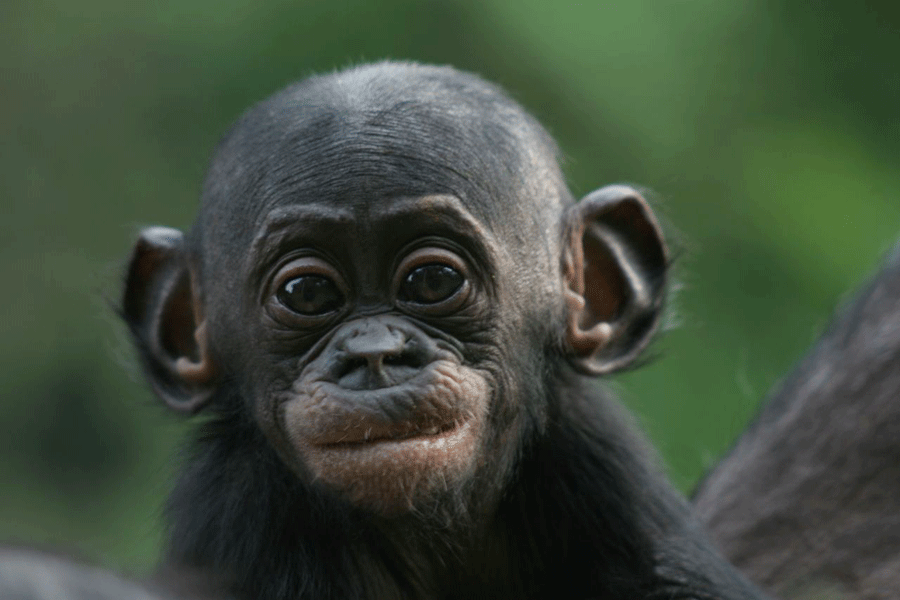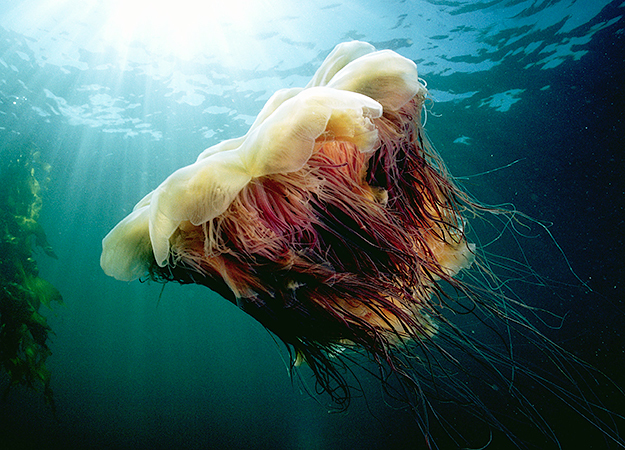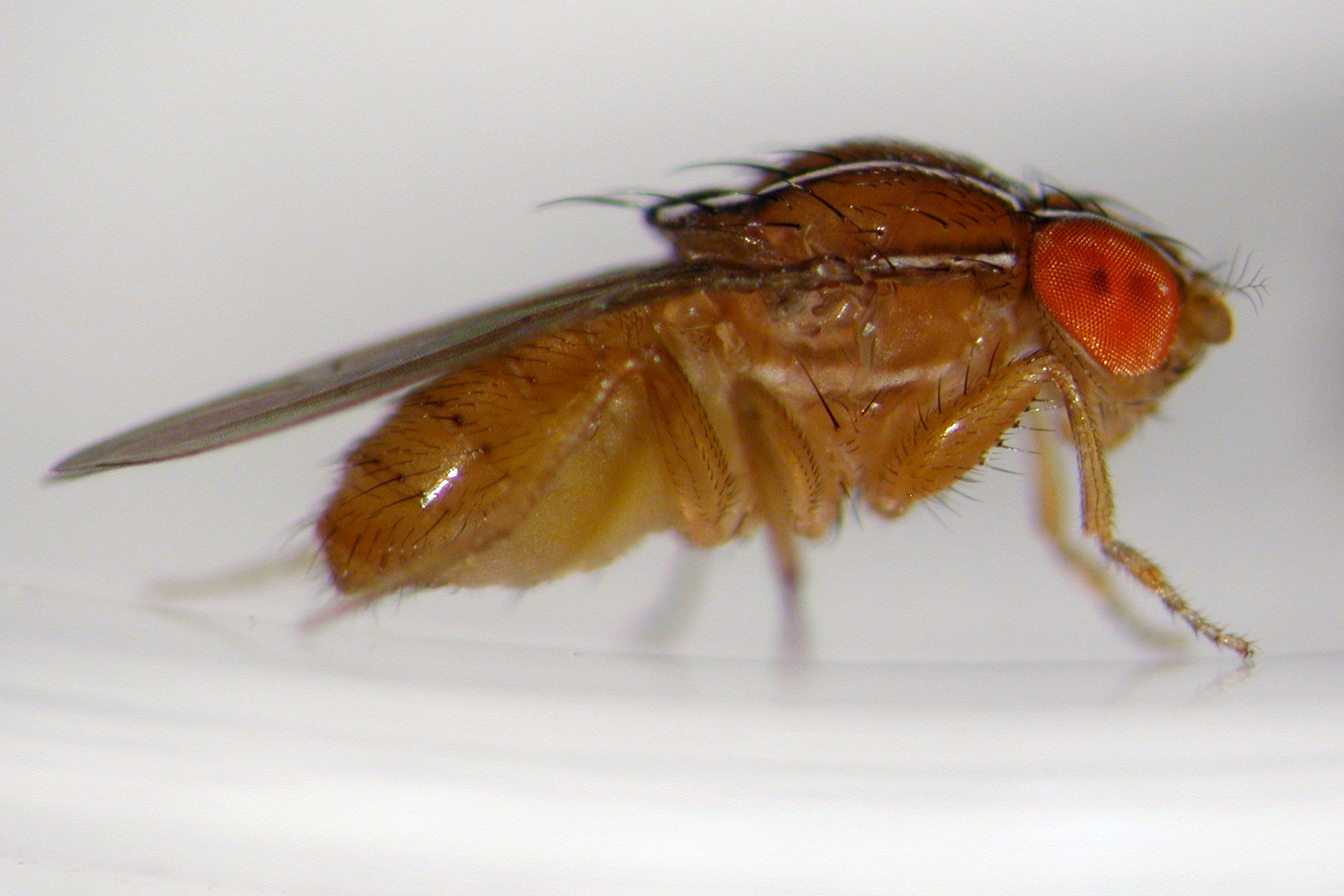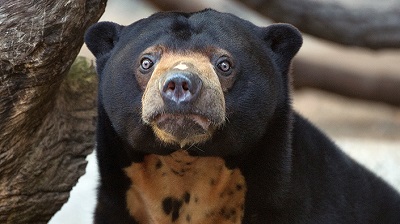Given the proximity to Halloween - this is a very topical squid! This is the Vampire squid! It gets its name from the long arms which flow behind it, making it look like a Vampire's cape. As far as squid are concerned, this is actually quite a small squid - only about a foot in length. They prefer warmer temperatures so they can swim around more easily. They also only live in the depths of the water, this combined with their dark color means they're camouflaged really well so they can avoid predators. We don't know a lot about the Vampire Squid - in fact it's first sighting was in 1903. Although when it was first discovered, people first thought it was an Octopus! And of course because they live so far down, the only knowledge we have of them is if a fisherman accidentally catches one or any calculated research, and research costs money!
Total Pageviews
Wednesday, 30 September 2015
Tuesday, 29 September 2015
Mars Water!
You can view the following article, here - http://www.theguardian.com/science/2015/sep/29/nasa-crossroads-mars-water-without-contamination-curiosity-rover
Nasa scientists may still be celebrating their discovery of liquid water on Mars, but they now face some serious questions about how they can investigate further and look for signs of life on the red planet.
The problem is how to find life without contaminating the planet with bugs from Earth.
Researchers at the space agency are keen for the Curiosity rover to take a closer look at the long dark streaks created by liquid water running down craters and canyon walls during the summer months on Mars.
But the rover is not sterile and risks contaminating the wet areas with earthly bugs that will have hitched a ride to the planet and may still be alive.
The vehicle has been trundling around the large Gale crater looking for evidence that Mars was habitable in the ancient past. It has so far uncovered evidence of past river networks and age-old lakes.
However, the dark, damp streaks, called recurring slope lineae (RSL), are a different prospect. Because they are wet at least part of the time, they will be designated as special regions where only sterile landers can visit. But such a restriction could hamper scientists’ hopes of looking for current life on Mars.
“There will be heated discussions in the next weeks and months about what Curiosity will be allowed to do and whether it can go anywhere near the RSLs,” said Andrew Coates of University College London’s Mullard space science laboratory.
Monday, 28 September 2015
Carbon and Forests | #FutureGadgets
We're used to carbon dioxide related issues hitting the headlines and its detrimental effects carbon dioxide has on global warming. It's becoming such a problem that scientists all over the world are trying to come up with ways of reducing the carbon dioxide level in our atmosphere. To do this, they've carried out trials on the Jatropha plant which exchanges lots of carbon dioxide - now, scientists have taken advantage of this and come up with a processing method to 'harvest' the CO2 from a large area in Saudi Arabia to use elsewhere - energy which is vital for developing countries as it's not only cheap, but doesn't impact global warming.
_in_Hyderabad_W_IMG_8812.jpg) |
| The Jatropha Plant |
Labels:
#FutureGadgets,
carbon dioxide,
energy,
global warming,
jatropha,
plant
MY NEW BOOK! | #AnimalsandUs
I'm very excited to announce I'll be releasing my second eBook, Animals and Us very soon! It will be released on Amazon Kindle and possibly a couple of other platforms - but I'll keep you informed of those. The book will take you on a tour of the world, the wonders of our world and their relationship with us. I'll also be posting a snippet of the book fairly soon - I'll keep you posted!
Saturday, 26 September 2015
The Tarsier
Okay, so I reckon evolution was VERY drunk when this little creature with HUGE eyes first walked on our planet. Unsurprisingly, they're not the most common of creatures- in fact, they're more or less, only found on the islands in Southeast Asia. Because they're not very common we don't actually know a lot about them, we don't really know why they have SUCH big eyes! The only real explanation scientists can come up with is that its down to a mutation in their DNA, which codes for their eyes. One of the other problems facing scientists is that this small primate is incredibly shy around humans, which of course provides quite a big problem for scientists! They're also incredibly athletic, with an unusually long anklebone enabling it to jump distances more than 40 times its own body length.
Labels:
#WeirdestAnimals,
animals,
anklebone,
asia,
primate,
rainforest,
southeast,
tarsier,
wildlife
Friday, 25 September 2015
What makes someone more likely to lie?
Whether it's your kids when the last chocolate biscuit is missing, or anything else - here's your guide to spotting that white lie!

- Social Class - the higher the class, studies have shown that they're more likely to lie!
- We're 20-50% more likely to lie in the afternoon - scientists put this down to 'psychological depletion'.
- Children lied to by adults are also more likely to lie.
- People may lie in the hope people will like them.
- They lie in the heat of the moment- perhaps because they're pressured for time.
So next time the last chocolate biscuit goes missing, think about these factors and you might just be able to work out who the culprit was!

Thursday, 24 September 2015
The Clouded Leopard
By far, this leopard is one of the most agile creatures on Earth. The Clouded Leopard has a distinctive, tawny grey coat-which is why they were given their name. It cleverly uses its long tail to help keep its balance, as it leaps from tree to tree in the dense rain forests of Southeast Asia. As far as their diet is concerned - it's incredibly varied, from birds to monkeys and wild pigs.
Unfortunately they're now at risk of extinction - all because their habitat is being rapidly destroyed through deforestation. They've also been hunted for its distinctive fur, teeth and bones and much like the tiger, their teeth and bones are used in traditional Chinese medicine.
Historically, clouded leopards were found across much of Southeast Asia, particularly around Nepal. Now we don't know much about the Clouded leopard, because they're so reclusive and spend most of their time in forests, sometimes up to 8,000 feet up. I think the fact we don't know much about clouded leopards, just makes them better!
Wednesday, 23 September 2015
How accurate are long term weather forecasts?
On the Autumn Equinox, here in Britain our minds start to turn to the prospect of snow. And, of course, the Daily Express runs their annual dramatic headline of the worst winter in years, but how good are weather forecasts? The Met Office has recently said that four day forecasts are now just as accurate as the one day forecasts in the mid 1980s. But as far as long term, 30 day forecasts are concerned we may well be waiting a while. Because the atmosphere is so chaotic, tiny observational errors occur all the time. Tiny they may well be, but they're the kind of errors which make a huge distance!
Tuesday, 22 September 2015
Bonobo Monkey
Bonobo Monkeys aren't just your average monkey, they're one of the closest living relatives monkey-wise to humans. Surprisingly, they share more than 98% of our DNA. They're unbelievably complex, demonstrating emotional intelligence and sensitivity. These amazing primates are found in only one country, the Democratic Republic of Congo in the heart of the Congo Basin, the second largest rain forest in the world. Traditionally Bonobos are thought of as the 'Make Love not War' primates. They're peaceful and have a reputation for being docile creatures - very human like! They're also very healthy, fruit makes up half their diet, a diet supplemented by insects and larvae. The Bonobos are also one of the most vocal primates, their communication is complex, sounds mixed with complex hand gestures. Bonobos are also very social creatures, they're always found in groups of varying sizes. Communities of up to 100 bonobos split into groups to search for food during the day and then return to sleep in the safety of each others company at night. Much like many other animals, sexual activity plays a huge part of their society, they use it to bond and resolve conflicts.
Bonobos aren't just amazing they're also pretty cute too!
Monday, 21 September 2015
The Worldwide Internet | #FutureGadgets
Labels:
#FutureGadgets,
2015,
gadgets,
internet,
technology,
wifi
The Pink See-through Fantasia
The Pink See-through Fantasia, aside from the rather funky name it's an incredible creature which we've only just recently discovered. Before hand, all we knew was that somewhere there was an unknown species of free swimming sea cucumber. We first found it in the Celebes Sea- a remote area of the western Pacific Ocean around the area of Sulawesi in Indonesia, by a group of underwater photographers and scientists on a research expedition. We actually don't know much about the creature and there's no data on it at all.
Sunday, 20 September 2015
The Lion's Mane Jellyfish
This huge jellyfish, confined to the icy waters of the Antarctic, gently propels itself through the water, expanding its pink folds into an umbrella shape. They get their name from the fact they've got loads of long, thin hair like tentacles. For most of their lives, they swim close to, or at the bottom of the ocean, feeding on shrimp, zooplankton and other small fish. It feeds in a number of different ways, from killing small animals with stinging cells on their tentacles. As far as human contact is concerned, stings just cause localised redness and temporary pain- in healthy people their stings aren't known to be fatal. Vinegar can also be used to 'deactivate' the sting but due to the large number of tentacles, you need to seek medical attention straight after exposure. In 2010, it was estimated that 150 people were thought to have been stung from the remains of a lion's mane jellyfish which had broken up into countless pieces on the coast of New Hampshire in the US. Given the sheer size of the jellyfish, scientists reckon that the incident was probably caused by just one jellyfish.
Saturday, 19 September 2015
The Magic of Fruit Flies
No, I'm not crazy - flies are actually amazing! To give them their proper name - Drosophilia melanogaster, they've been used in genetics research for over 100 years. Fruit flies actually carry 75% of the genes that cause disease in humans, so they're ideal for science research. They're also pretty easy to take care of - much easier than rats or fish. The only slight issue is that of course, they fly. Because of this, scientists need to knock them out before they're used - to do this, scientists have a number of options - they can either cool them or knock them out with carbon dioxide. The carbon dioxide method is probably the best, partly because it's cheap and also because it knocks them out long enough for the experiment to be carried out. Once the experiment is over, they wake up and are perfectly fine (if not a little dizzy :) ) Currently they're being used across labs worldwide in everything from neurological disease to manipulating genes for future treatments.
The Greatest Voyage
Today's post, all about Charles Darwin was part of The Young Scientists Journal's guest blog on The British Exploring Society. You can see the original version here - http://www.britishexploring.org/blogs/young-scientists-journal-guest-blog.aspx?EntryId=259&tabid=343
The story of evolution begins over 100 years ago in 1809. A man called Charles Darwin was born. He was born as one of six children in a conservative Christian family. His experiences led him to be quite withdrawn and not particularly outgoing. He began his university education as most people did, following in the footsteps of his father and grandfather by securing a place studying medicine. However, he found the then brutal surgical techniques too much to handle, so he abandoned his plans to be a doctor and began collecting beetles whilst he studied Divinity at Cambridge.
Darwin decided the one thing he’d love to do would be to follow his real passion- biology. His tutor at Cambridge recommended him as a “gentlemen naturalist” for a worldwide voyage on HMS Beagle – as anyone would, he jumped at the chance.
In 1835, he left South America for the main attraction – the Galapagos islands. 600 miles off the cost of Ecuador he studied their unique, incredible ecosystem. Whilst he didn’t have any particular 'eureka' moment, he began to draft each of his observations. This was where he came up with the idea of “Natural Selection” – although, he struggled with the idea because it had contradicted everything he was taught growing up.
After a long bout of illness he’d written thousands of words on evolution yet, he had published nothing. In 1858 he realised he had to do something – and fast. A man called Alfred Russel Wallace, one of Darwin’s admirers had independently come up with the theory of evolution and was potentially about to publish his own work. If Darwin did nothing, there was a strong possibility he would get no credit for a lifetime's worth of work. Eventually they decided to present their work at the same meeting. Towards the latter end of 1858 he published the infamous“The Origin of Species by means of Natural Selection”, he said that writing it was like “living in hell”; he was riddled by doubt and petrified of the reaction he'd get from the scientific community.
If we fast forward over a hundred years his work has enabled us to understand and discover millions of species, to unlock incredible secrets of our past and a key to the future - all with the help of Charles Darwin. We now stand at a precipice where changing climates and population pressure threaten some of the species Charles Darwin spend his life investigating.
- See more at: http://www.britishexploring.org/blogs/young-scientists-journal-guest-blog.aspx?EntryId=259&tabid=343#sthash.ShKvh8Q2.dpufFriday, 18 September 2015
The Sun Bear | #WeirdestAnimals
They take their name from the bib-shaped golden patch on their chest which legend says, represents the rising sun. They're also nicknamed the dog bear as they have the same kind of build a short muzzle nose. To stop them overheating, they have a sleek, black coat which is also thick and coarse to provide protection from things like twigs and branches - but also to keep dry!
Ironically Sun bears are nocturnal, lumbering through the forests by night, snacking on berries and so on- everything even up to small rodents. They also have a huge tongue which is perfect for extracting honey from bees nests - giving them their other nickname, the 'honey bear'. We don't actually know a lot about honey bears, we don't even have enough data to know how many there are in the wild. Having said that, because of the high deforestation and poaching levels scientists aren't hopeful - they might actually be in danger of extinction.
Why are 'in' calls more reliable than out? | #DavisCup
To celebrate the start of the GB vs Australia semi final tie in Glasgow I thought I'd add another tennis related post to the collection!
If you're a huge tennis fan, you might have noticed that when a player challenges a call, more often than not, it's an 'out' call they're challenging. This is because the brain is slow at processing fast moving objects and the brain tries to compensate. So much so the brain can end up over compensating. If the ball continues to move in a straight line the Umpire 'sees it' farther than it is and the ball bounces inside the court, and the call is wrong. Lets hope none of that happens this weekend!
Good luck Team GB - go smash it!!
(sorry to my Australian readers!! :) )
Team GB initial nominations:
Andy Murray (Number 3 in the world)
Kyle Edmund (21, just entered the top 100)
Jamie Murray (Doubles, ATP top 8)
Dom Inglot (Doubles around 40 in the world)
James Ward
Team Australia Nominations:
Bernard Tomic (a late replacement for Nick Krygios)
Sam Groth
Lleyton Hewitt
Thanasi Kokinakkis
Thursday, 17 September 2015
The Great White Shark
Great White Sharks are probably thought of as one of the scariest creatures in the world - and you'd probably be right! They can actually be found in the coastal waters of all the main oceans. Having said that, shark attacks are incredibly rare, and even rarer that they turn out to be fatal. They are actually huge, they average around 15ft long but some have recorded at 20ft! They're also very speedy, they can swim up to around 15mph! Their blue-grey color actually helps them to blend in with the color of the sea, particularly when they're viewed from above.
In the Oceans, they actually remain mostly threatened, their only natural predators are the killer whale, but they are however threatened by us, so much so they're actually classed as vulnerable on the endangered species list.
Even though we might not be able to directly help the Sharks, one thing we can do to help is to not buy the 'products' people make from them from their jaws to other products made from their fins.
Together, we can save the Great White Shark.
In the Oceans, they actually remain mostly threatened, their only natural predators are the killer whale, but they are however threatened by us, so much so they're actually classed as vulnerable on the endangered species list.
Even though we might not be able to directly help the Sharks, one thing we can do to help is to not buy the 'products' people make from them from their jaws to other products made from their fins.
Together, we can save the Great White Shark.
Wednesday, 16 September 2015
The Carbon Cycle | A2 Biology Revision
- Energy enters an ecosystem via the Sun
- Energy lost as heat - one directional flow
- There's only a certain quantity of Nutrients - so carbon and nitrogen need to be recycled
- Nutrient is taken up by the producer
- Producer incorporates it into simple inorganic molecules then into complex organic
- Producer eaten
- Nutrient passes to the consumer
SAPROBIOTIC microorganisms - decomposers
(death)
- decomposers release the nutrient in original simple form
CYCLE BEGINS AGAIN
0.04% Carbon Dioxide in the atmosphere - greenhouse gas, contributes to global warming
Plants remove Carbon Dioxide from the atmosphere to build macromolecules
Macromolecules: Fats, Proteins, Carbohydrates
CO2 returned to the air through respiration
Short term fluctuations
Carbon dioxide levels globally vary because:
- Combustion of fossil fuels
- Deforestation
Aimed specifically at AQA A Level Biology
Finding Nemo....
.... or a clownfish! :)
The clown fish (also called anemone fish) are actually more or less all identical but they have subtle differences in shape and live in different habitats. Of all the fish, they're probably the most recognizable, mainly for the obvious movie connections! Before they take up residence, they perform a dance with another fish, gently touching the other fish until they become acclimatized to the nearby fish. They also have a layer of mucus on their skin to make it immune from the anemone's sting. As far as fish are concerned they can live for a surprisingly long time - up to 10 years in the wild!
Weirdly, all clown fish are born male and have an ability to change sex, although just to become the dominant female. However they can't switch back.
Subscribe to:
Comments (Atom)







.gif)






